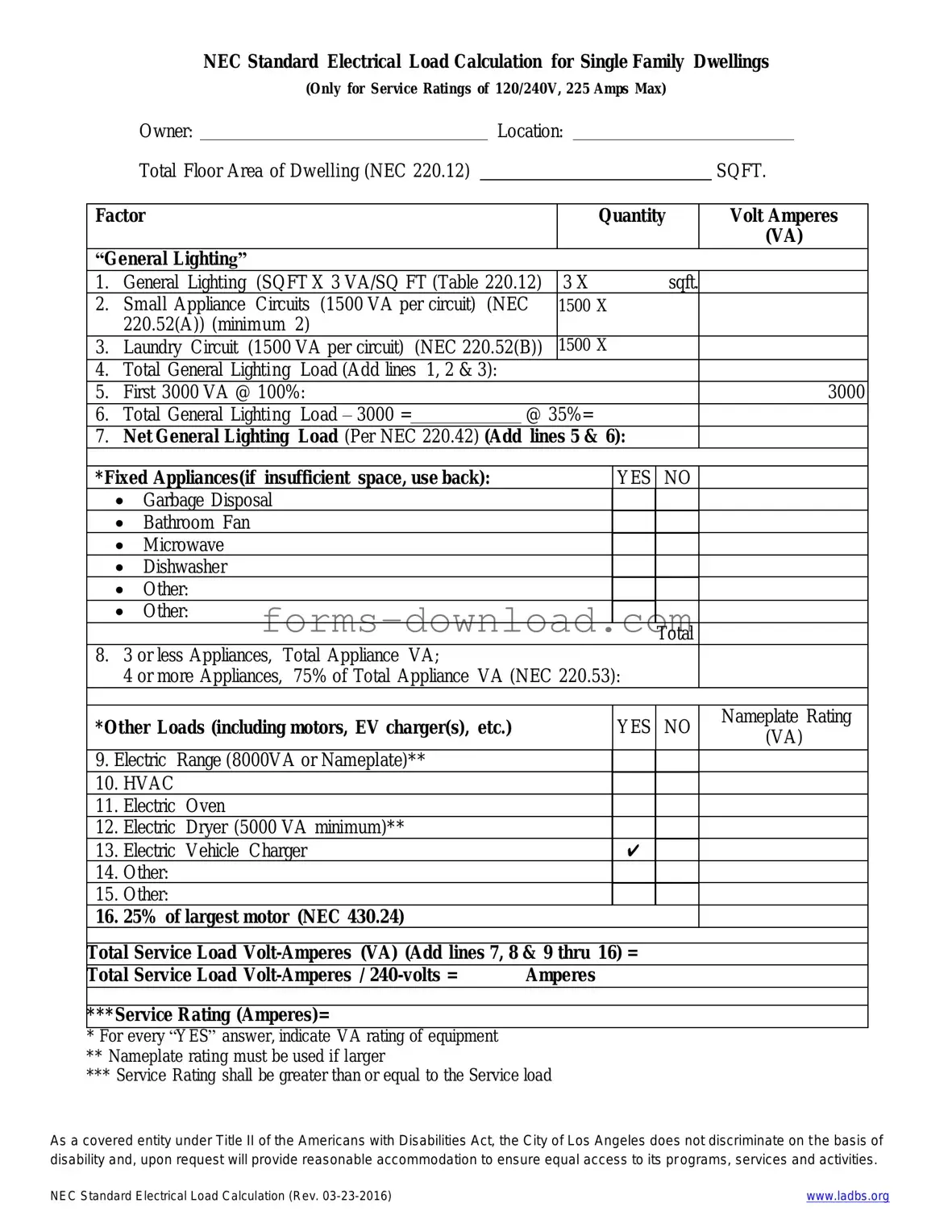The LADBS NEC Standard Electrical Load Calculation form plays a crucial role in ensuring that electrical systems are designed and installed safely and effectively. This form is essential for anyone involved in electrical work, from contractors to homeowners, as it provides a systematic approach to calculating the expected electrical load of a building. Key aspects of the form include the requirements for determining both the demand and the total load, which take into account various factors such as the type of occupancy, the number of outlets, and the anticipated usage of electrical appliances. By adhering to the guidelines set forth in this form, users can ensure compliance with the National Electrical Code (NEC) and local regulations, thus minimizing the risk of overloads and enhancing overall safety. Additionally, the form encourages thorough documentation, which can be invaluable during inspections or future renovations. In essence, the LADBS NEC Standard Electrical Load Calculation form serves as a foundational tool for creating reliable electrical systems that meet both current needs and future demands.

